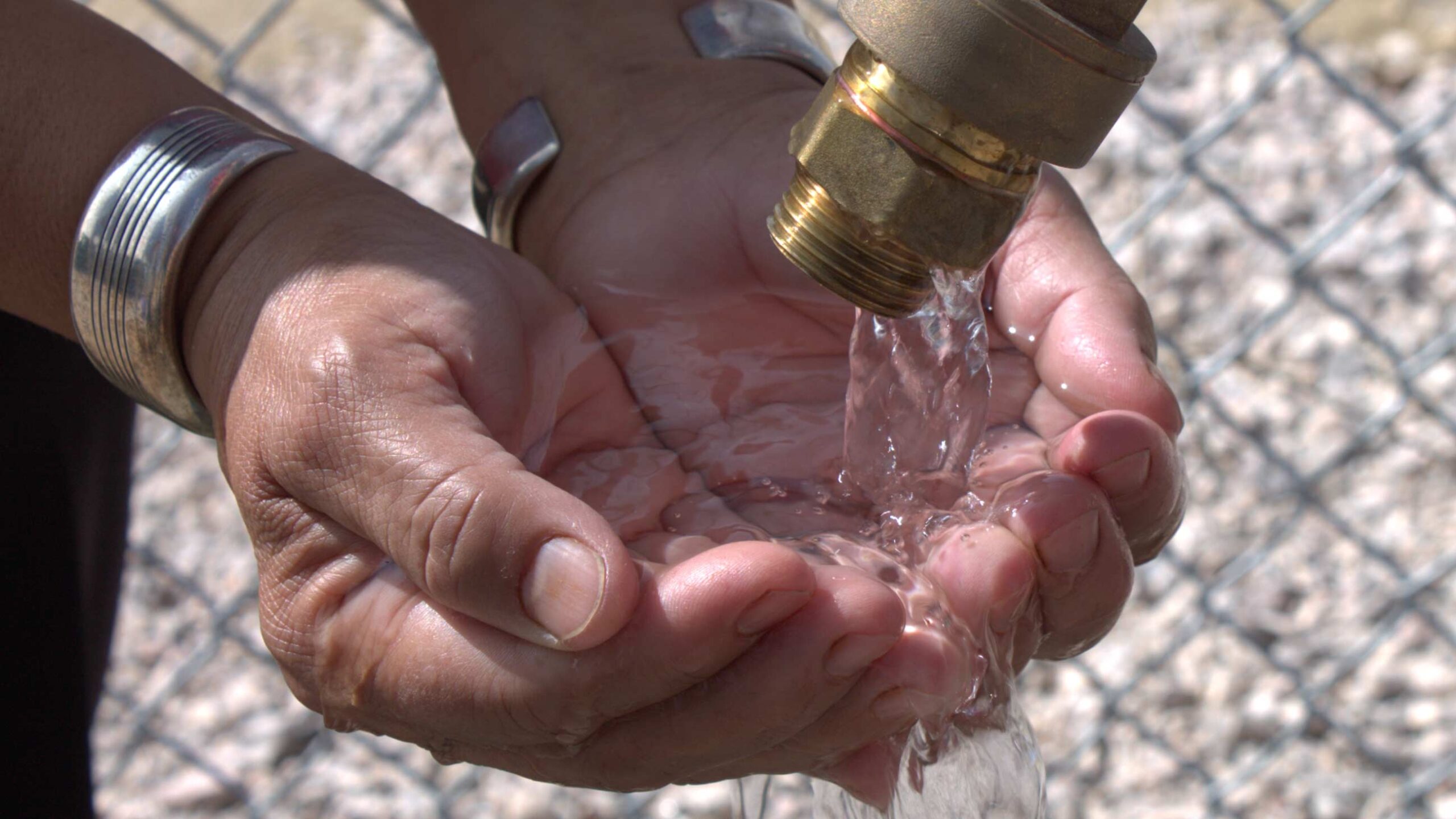
All hands to the pump
CDC Foundation funds new ASU-led project to expand clean water access for the Navajo Nation

Above: Twenty percent of homes within the Navajo Nation lack indoor plumbing, meaning residents drive 10 or more miles to fill tanks at transitional water loading points. Courtesy of a new grant from the CDC Foundation, ASU is leading a project to build multiple permanent stations that will improve clean water access for thousands of people. Photo courtesy of Navajo Safe Water
Access to clean water is a dire challenge for one third of the world’s population, including people living in the southwestern United States. Approximately 20% of households in the Navajo Nation lack indoor plumbing, meaning thousands of residents haul water in tanks they fill from a mixture of regulated and unregulated sources. The latter are susceptible to contamination and therefore pose a threat to human health, so more safe water sites are desperately needed.
Toward that end, the CDC Foundation, an independent nonprofit that supports the work of the Centers for Disease Control and Prevention, has awarded $1.8 million through the Arizona State University Foundation to Construction in Indian Country, or CIIC, which is part of the Ira A. Fulton Schools of Engineering at ASU. The funds will be used to install new permanent water loading stations across the Navajo Nation as part of COVID-19 response efforts.
“We started the project in mid-October, and we’re targeting completion by the end of 2022,” says Marcus Denetdale, program manager for CIIC, which operates within ASU’s Del E. Webb School of Construction and supports infrastructure development on tribal land as well as expanded construction management capabilities within Native American communities.
“Right now, we’re collecting data,” he says. “Indian Health Service, which is part of the U.S. Department of Health and Human Services, identified 41 proposed sites for us to consider for these permanent water loading stations. So, we’re looking at the number of homes without piped water in those areas, current water usage levels, local water quality and a lot more.”
When that analysis is complete, Denetdale and others on the project team will submit a report for relevant Navajo Nation authorities and local utilities to consult in deciding where to proceed with the new stations.
“Our goal is eight, but if we can squeeze the budget or if other donors are able to add funding, we could build 10 or maybe 12 new stations in total,” says Denetdale, who is an enrolled member of the Navajo Nation and a doctoral student of civil, environmental and sustainable engineering in the School of Sustainable Engineering and the Built Environment, one of the seven Fulton Schools at ASU.
He explains that each additional permanent water loading station makes a significant impact on the local community. Many people drive 10 or more miles to one of many rudimentary or transitional water points to fill a 250- or 300-gallon tank on their truck or trailer.
“Some of these are very basic pump and garden hose systems,” Denetdale says. “So, our goal with the new stations is to increase pressure and volume in a way that is mindful of current drought conditions and can be supported by the local water tables and utility systems. But we’re also increasing quality of life, which is part of the ASU charter.”
To further the impact of the project, Denetdale says the team will employ a doctoral student researcher to analyze decisions and outcomes to better inform future infrastructure projects on tribal lands. He says there is very little research in this area, so there is a lot to learn.
“I’m also teaching a new ASU class in the spring semester called Construction Management in Indigenous Communities,” he says. “Depending on the pandemic, it is my is my hope to take students to one of the watering stations after we break ground. But at the very least, we’ll be talking about this work as one of our case studies in class. More firms are becoming involved with tribal projects, so we need more young professionals with knowledge of this sector.”
Denetdale says CIIC designated a native-owned construction management firm called Kenēw to acquire contractors and direct the actual work in the field. Other partners include water quality engineers from Montana State University and the University of Arizona, as well as Fulton Schools faculty members, including Tony Lamanna and Treavor Boyer.
“This is a broadly collaborative effort,” Denetdale says. “It’s all hands to the pump.”



































